A weekly or monthly newsletter is lead nurturing 101. It’s a long way from a well thought email sequence, but sending out a formatted newsletter on a regular basis creates an expectation, and a regular appointment with your customers & prospects.
The simplicity of the process makes it a weapon of choice for B2B marketing teams, and the market has grown rapidly, to the point where today there are several dozen email marketing solutions.
In this article, we compare the best software on the market for setting up an effective newsletter with ease.
Sommaire
What not to do: do it yourself
Creating your own newsletter is a feasible but complicated exercise. The end result could be detrimental to the company’s image, statistics and strategy.

There are many reasons for this. It’s hard to create a professional design if you’re not a specialist in the field. Sending a newsletter whose UX (user experience) is neglected impacts click-through and conversion rates. This could also cause deliverability problems: your emails could end up as SPAM. The shipment itself also quickly becomes very complex. Inboxes have very aggressive default filters. A professional newsletter tool lets you take advantage of all configurations, and shares your reputation as a sender with other customers who send the same type of email.
Overcoming these barriers also raises the question of monitoring and reporting. Analyzing statistics (email opens, click-through rates, conversion rates) is essential. However, “from scratch”, you won’t have any tools to understand what worked and what didn’t, and you’ll miss out on new e-mail addresses.
My advice
If you’d like to cobble together something to send out your newsletter, it’s clearly possible. There’s a plethora to choose from, and you’ll find plenty of literature on the subject. But if you ask us, making a newsletter in itself is pointless. The aim is to keep a regular point of contact with your customers & prospects, and it’s really better to mourn your loss and accept to cough up some twenty euros a month for a professional solution that will enable you to get something out of the newsletter. Especially as there are many very solid solutions available today, at objectively very low prices.
The best newsletter creation software: comparison table
#1 Brevo (ex-Sendinblue)
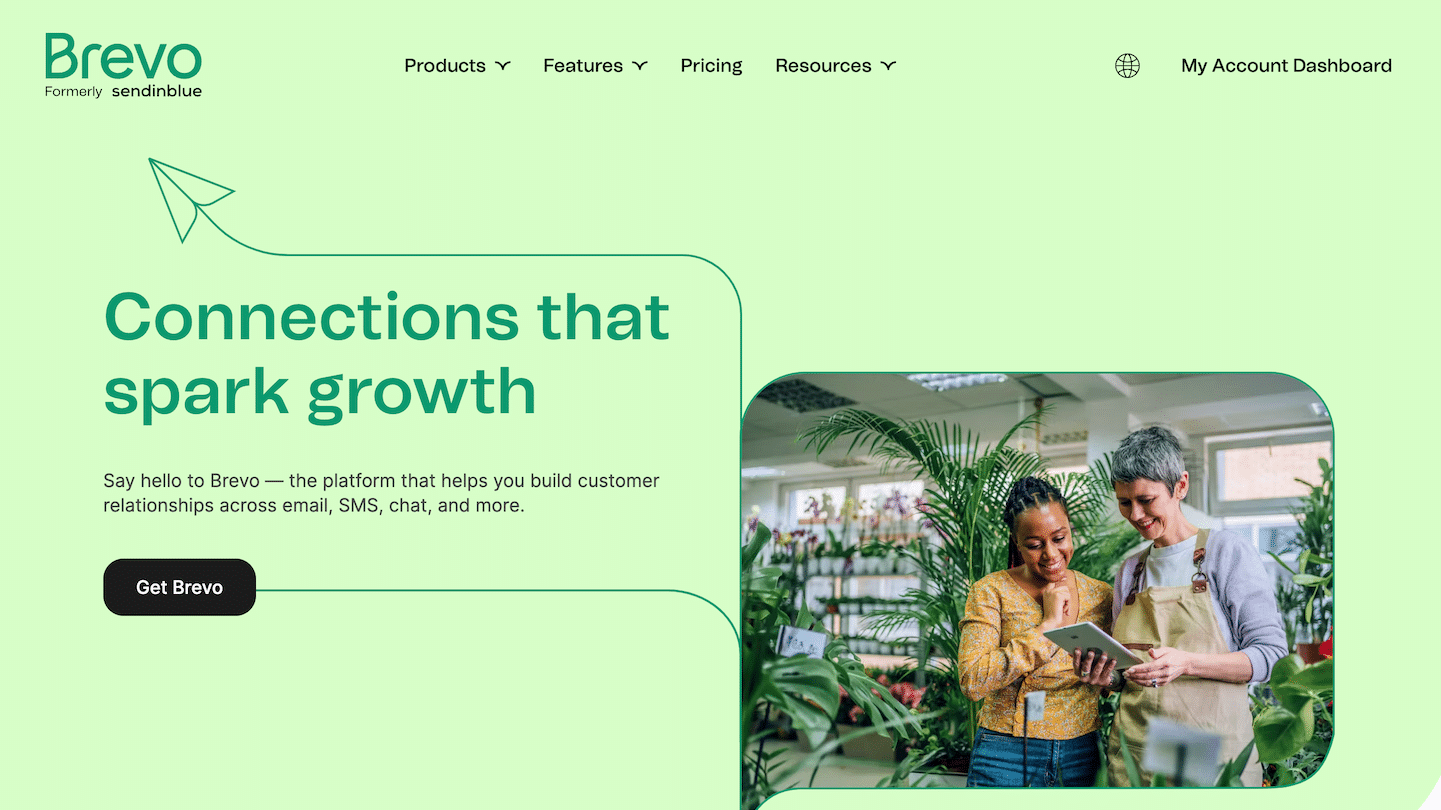
Brevo (formerly Sendinblue) is a recognized software package for small and medium-sized businesses looking for a tool that enables them to carry out relationship marketing operations on an affordable budget. 100% French, this software also has the advantage of keeping user data in France. Customer service is available in French. This comprehensive offering can be used to automate a wide range of marketing operations, from creating live chat to developing SMS and emailing/newsletter operations.
On the other hand, the capture and lead generation tools are less powerful than those offered by some competitors. The platform was quite unstable for a while (2021 – 2022) but it’s been much better recently.
Brevo offers several emailing rates:
- Free: 0 euros per month, with 300 emails per day, it’s our favorite free emailing software.
- Lite: 19 euros per month, for up to 10,000 emails, with no daily sending limit
- Premium: 49 euros per month for up to 20,000 emails per month, with marketing automation, Facebook ads and telephone support
- Company: on quotation
#2 Convertkit
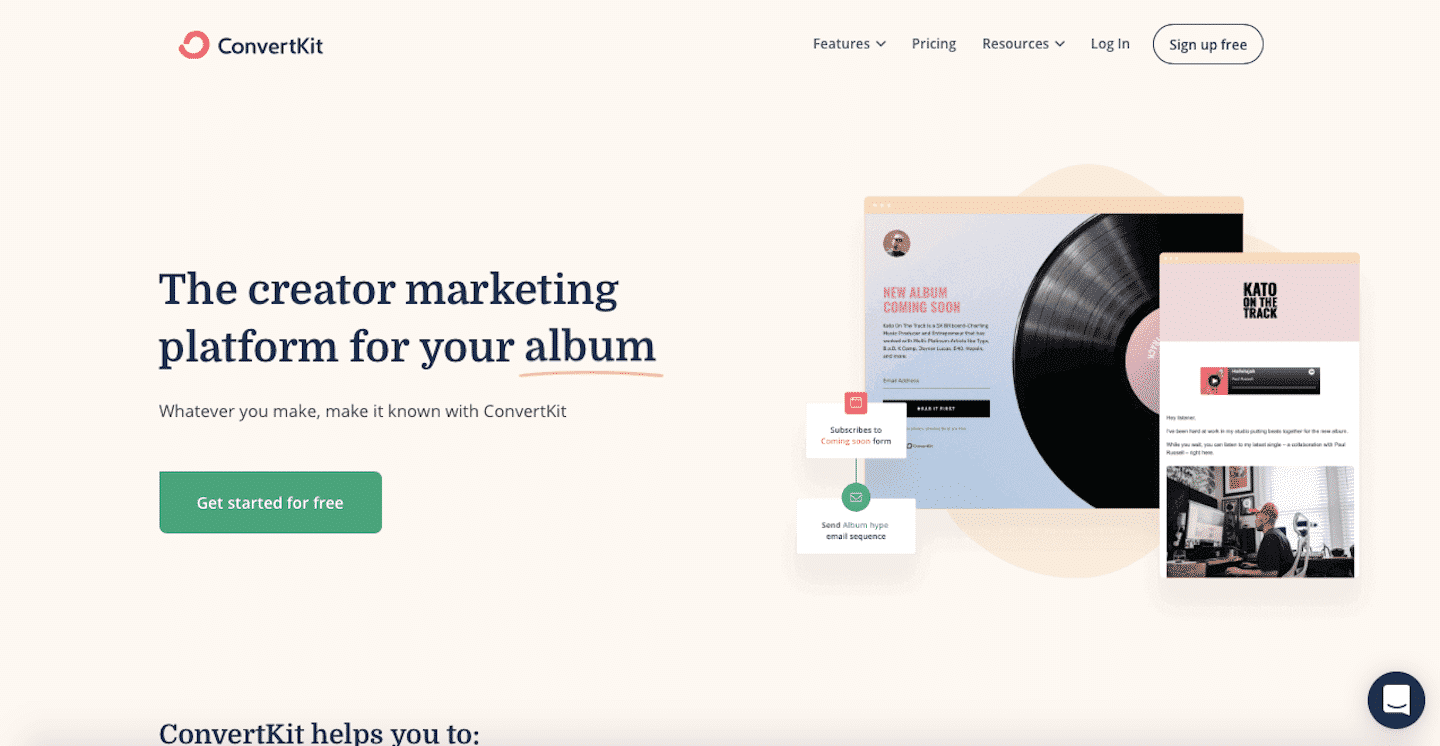
Convertkit is the ideal marketing and email automation software for professionals looking for a complete inbound marketing suite. The reporting is detailed and relevant, allowing you to better analyze your strategy. Last but not least, contact management is quite flexible, making it easy to manage your subscribers.
On the other hand, it takes a little time to master the tool, as the interface is complex. It’s easy to get lost and overwhelmed. Last but not least, Convertkit is a rather expensive emailing tool, which may discourage some.
For a base of 1,000 subscribers, Converkit proposes three offers (in dollars):
- Free: from 0 euro/month
- Creator: from $25/month
- Creator Pro: from $50/month
#3 Beehiv
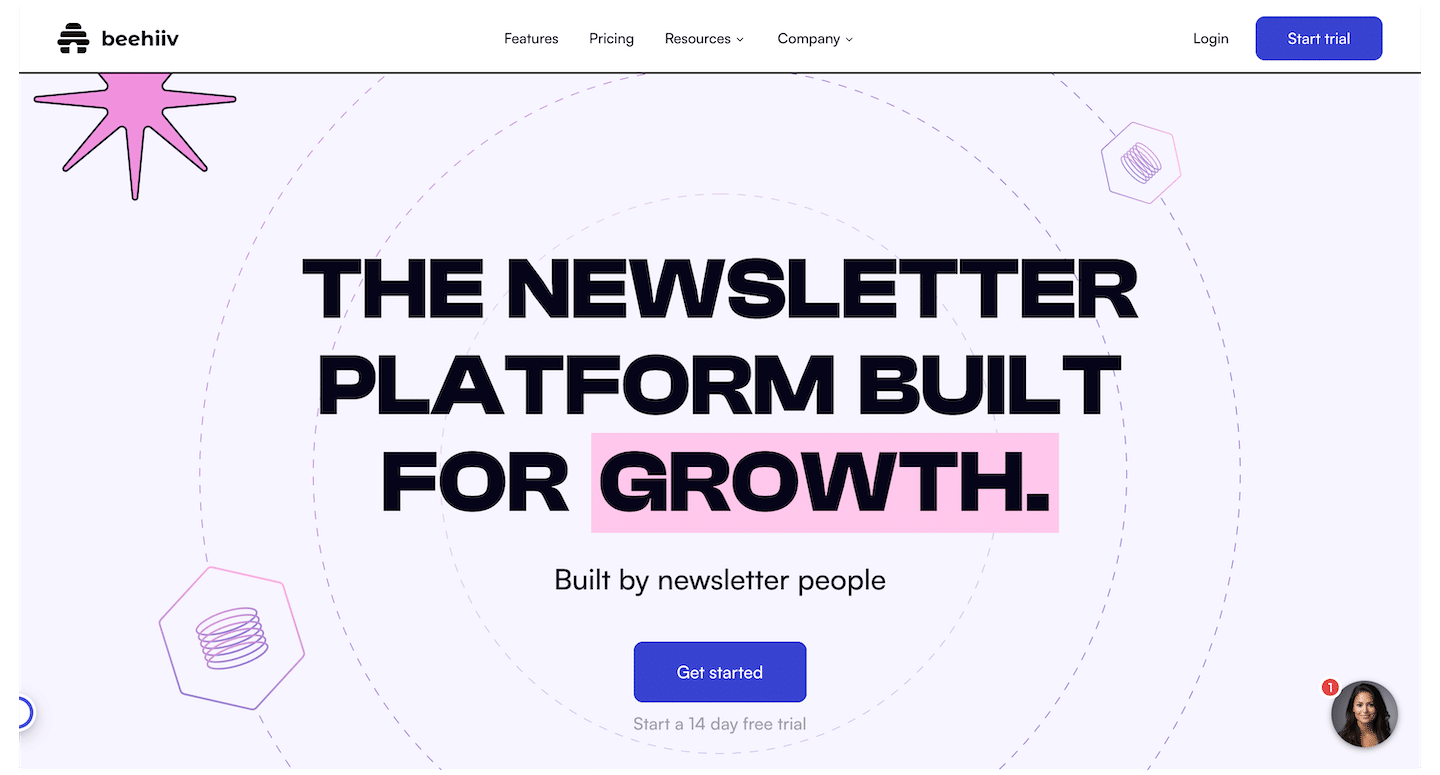
Beehiv is another platform that is all the rage with content creators and influencers, but they have retained a DNA that is more “tool” than “platform”.
The free plan allows you to go up to 2,500 subscribers, and gives you access to the essential features for launching a newsletter, including the recommendations network which allows your newsletter to be mentioned on other people’s newsletters – and other people’s newsletters to be mentioned on your own. A sacrifice for the brand image, but a powerful growth lever when used properly.
The $49/month “Grow” plan allows you to grow to 10,000 subscribers, gives you access to advanced forms for conducting surveys, and lets you launch a paid newsletter.
The “Scale” plan allows you to go up to 100,000 subscribers, and gives you access to a host of more advanced features such as A/B testing, a network of advertisers to monetize the newsletter, the ability to launch a sponsorship program, marketing automation sequences and much more.
#4 Substack

Substack is a very popular newsletter solution for “content creators” or “influencers” for several reasons:
- The software is free to use, with no limit on the number of contacts. The business model is to take 10% of subscriptions and donations to newsletters that offer it.
- Substack also saves all editions sent, and makes them available for online reading with a clever call-to-action to encourage registration. It’s as if every issue of the newsletter became a blog post accessible from Google, Linkedin, etc. It’s a long way from an SEO-optimized CMS and all that goes with it, but it’s simple, effective and… free.
- Substack features an internal recommendation engine. The idea is that Substack automatically recommends newsletters linked to the readers of a given newsletter. A bit like a Netflix or Amazon recommendation, but for newsletters. For those launching a newsletter, this is a very powerful lever for acquiring new subscribers.
In practice, Substack is still very little used for more “corporate” newsletters, but the lines between corporate communication and “human” communication (by employees, founders, etc.) are becoming increasingly blurred, and we regularly see companies speaking out (usually through a personal profile) on Substack.
#5 Moosend
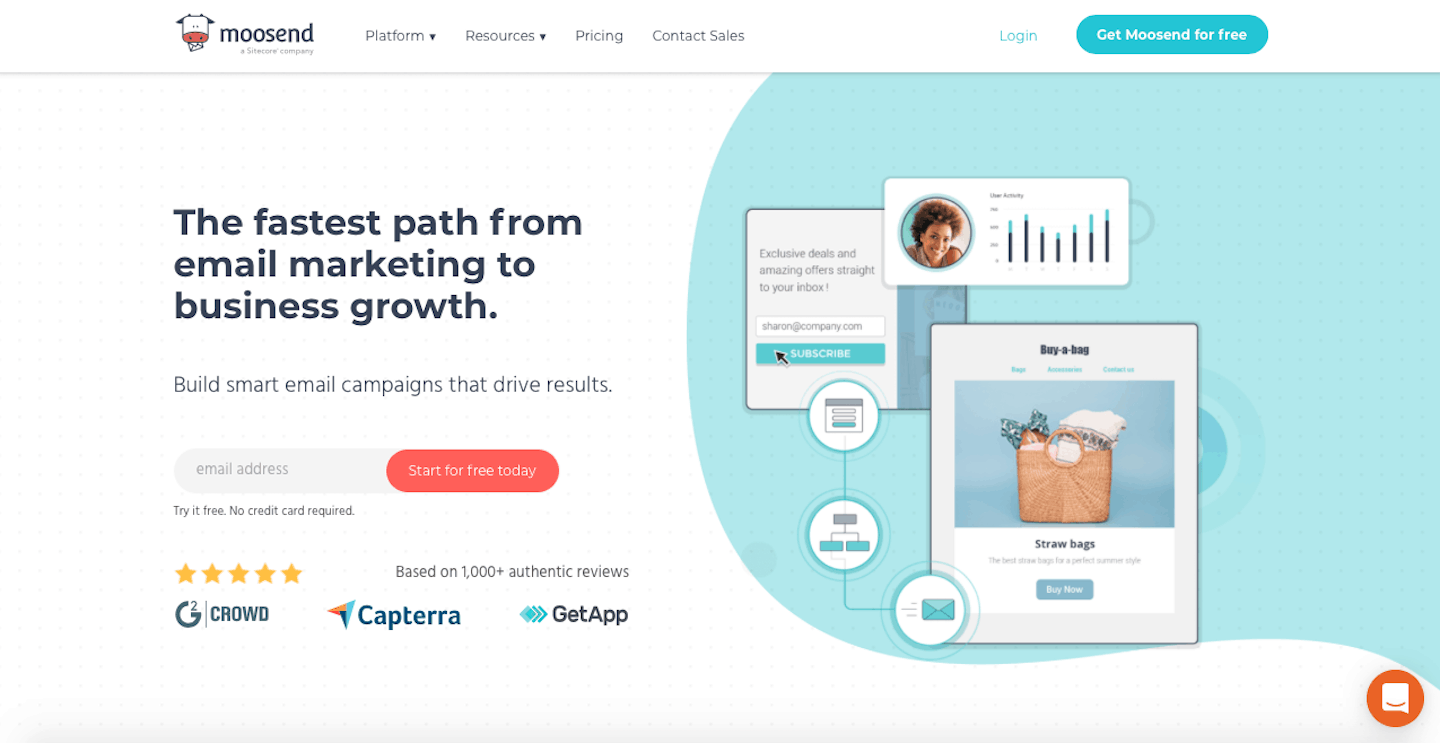
As the least expensive newsletter creation tool on the market, Moosend has the advantage of very reliable and comprehensive reporting. This detailed report makes it easy to determine whether your campaign has been a success. Finally, it’s easy to manage your contact list.
On the other hand, compared with some of our competitors, the interface is dated and doesn’t really make you want to dive in. Finally, Moosend doesn’t offer many templates. This means using the few available or working around your own.
Moosend offers several price plans (in dollars), which evolve according to the number of contacts:
- Free: $0, up to 1,000 emails
- Pro: from $8/month
- Company: on quotation
#6 ActiveCampaign
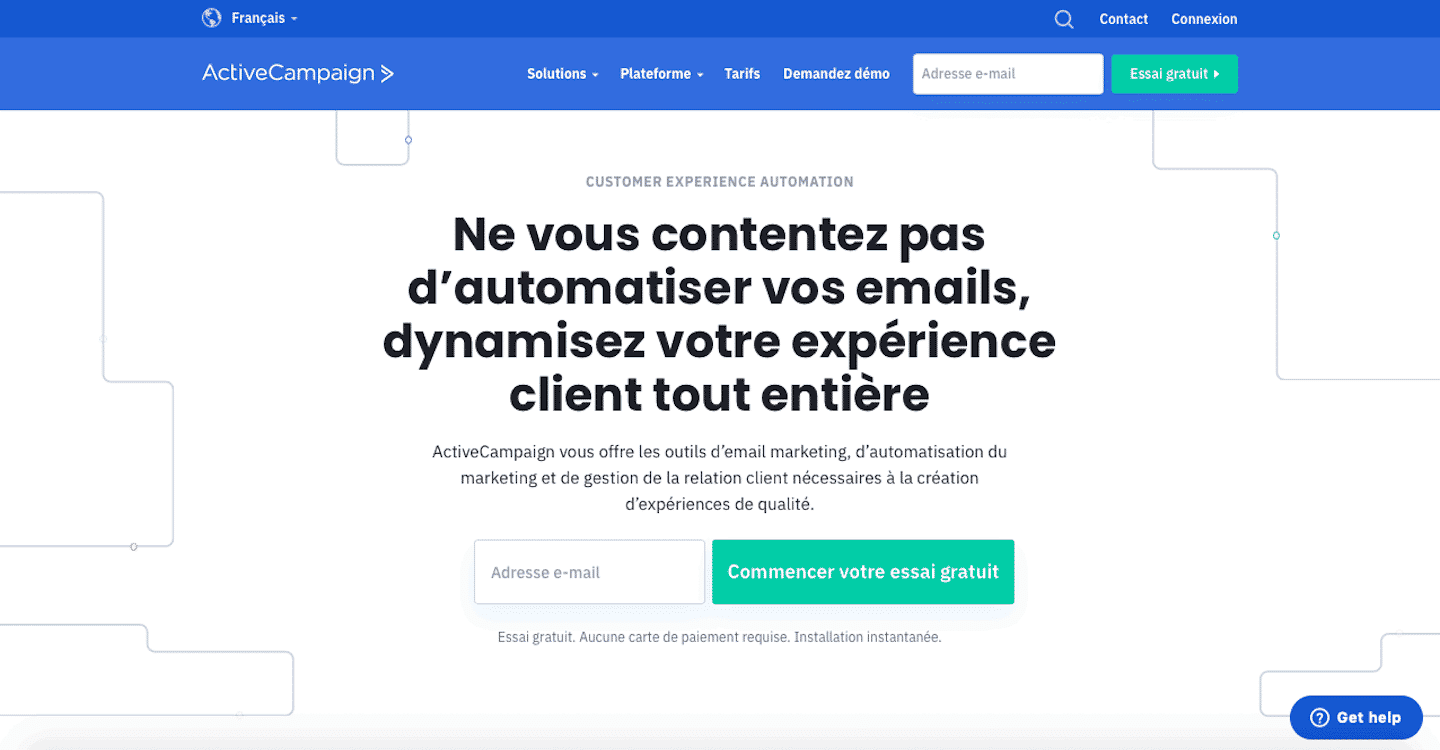
Ideal for digital businesses (e-commerce, digital companies and B2B), ActiveCampaign targets companies looking for a tool with advanced automation features (email marketing, sales automation, marketing automation and customer service).
The interface is easy to use, and allows you to create newsletter campaigns quickly using drag & drop. Finally, the tool is ideal for capturing and generating qualified leads.
On the other hand, prices tend to rise quickly, and the slightest additional feature adds to the bill. Likewise, the interface seems a little complicated at first glance, especially if you’re only planning to create newsletters.
Last but not least, customer service is not available in French.
As far as prices are concerned, ActiveCampaign offers several packages (in dollars). The basic one, for 500 contacts, comes to :
- Lite: $9/month package
- Plus: $49/month package
- Professional: $129/month package
- Enterprise: formula at $229/month
#7 MailerLite
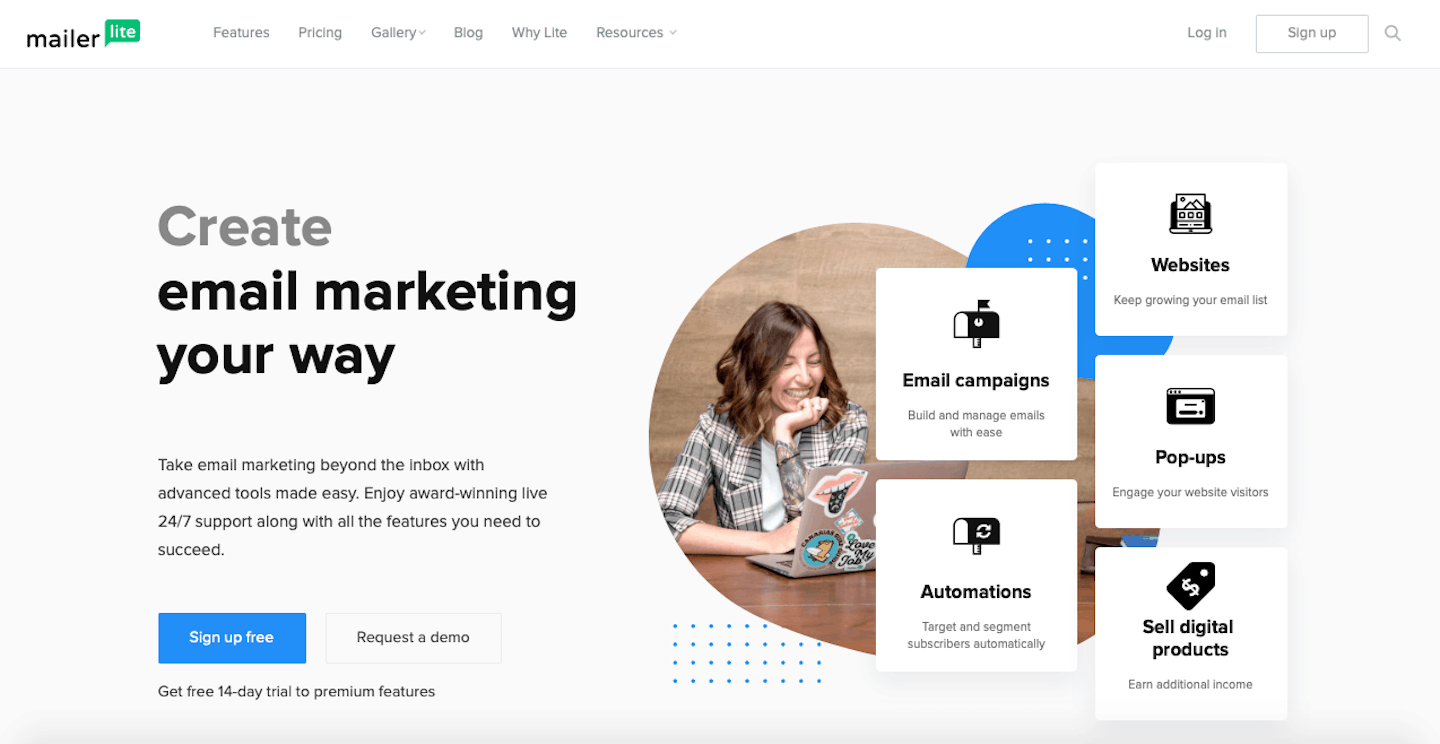
A European solution, MailerLite offers a wide range of integrations (Paypal, Squarespace, etc.). The interface is quite successful and makes you want to concentrate on it. Finally, MailerLite offers a series of tutorials explaining how to use and create newsletters. Very pertinent explanations on the agenda.
Unfortunately, the software offers few CRM integrations (Shopify, WordPress, WooCommerce and Zapier). The landing page creation tool is rather limited compared to other features on offer. Lastly, there are a number of questions to be asked about the reliability of reporting data.
MailerLite offers a range of pricing options.
- 9/month for 1 to 1,000 subscribers with unlimited emailing
- 13 euros/month for 1,001 to 2,500 subscribers with unlimited e-mailing
- 26 euros/month for 2,501 to 5,000 subscribers with unlimited emailing
- 44 euros/month for 5,001 to 10,000 subscribers with unlimited emailing
#8 ZohoCampaigns
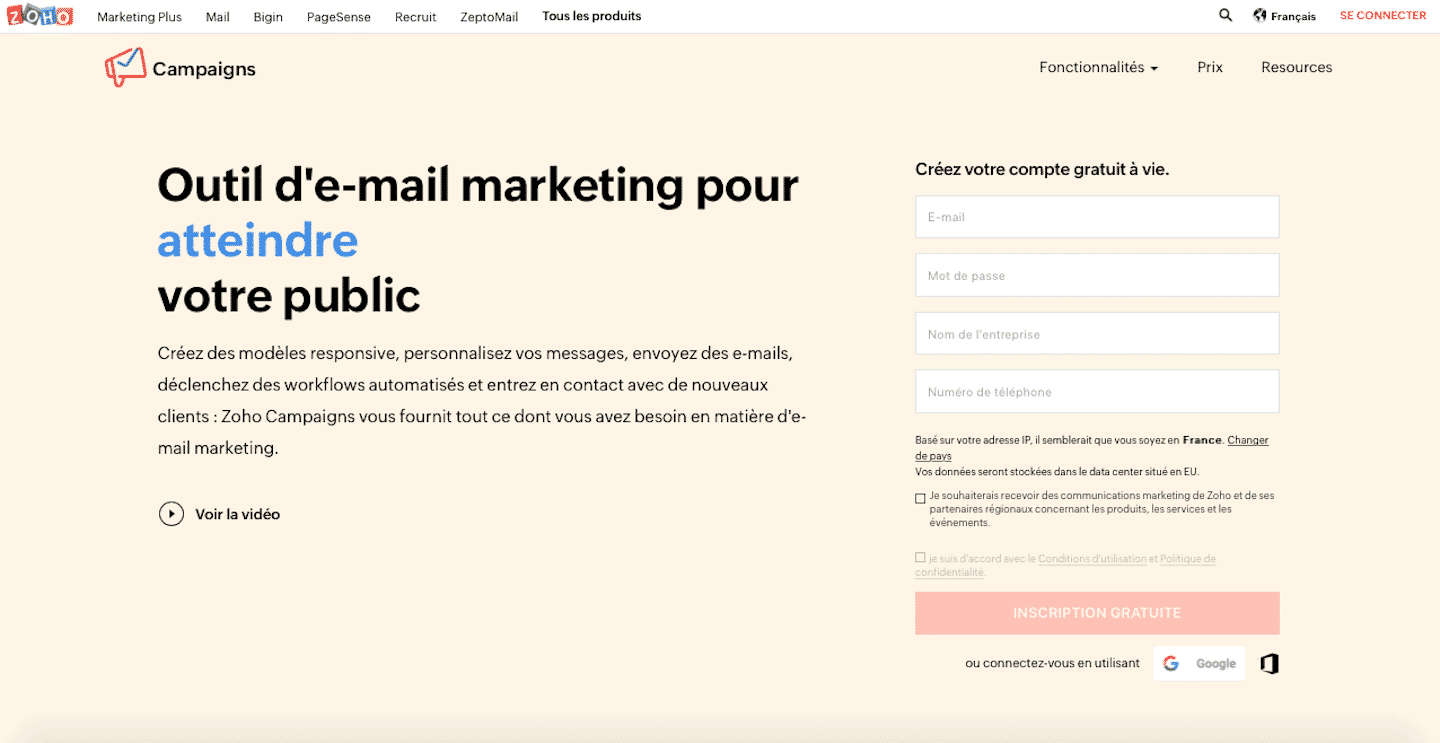
ZohoCampaigns is the ideal tool for marketers and professionals already using Zoho’s natively integrated B2B CRM. It offers efficient, comprehensive and detailed reporting, as well as an excellent contact management tool.
However, the interface is somewhat dated, naturally impacting the user experience. Capture and lead generation tools are less effective and less developed than those offered by competitors. Finally, the interface for creating mailing campaigns is perceived as a little limited.
ZohoCampaigns offers three billing options:
- Email-based formula: 3 euros per month for 250 contacts and 500 emails
- Subscription-based formula: 4.50 euros per month for 500 subscribers
- Formula by e-mail credits; 7 euros per month for 250 credits
#9 GetResponse
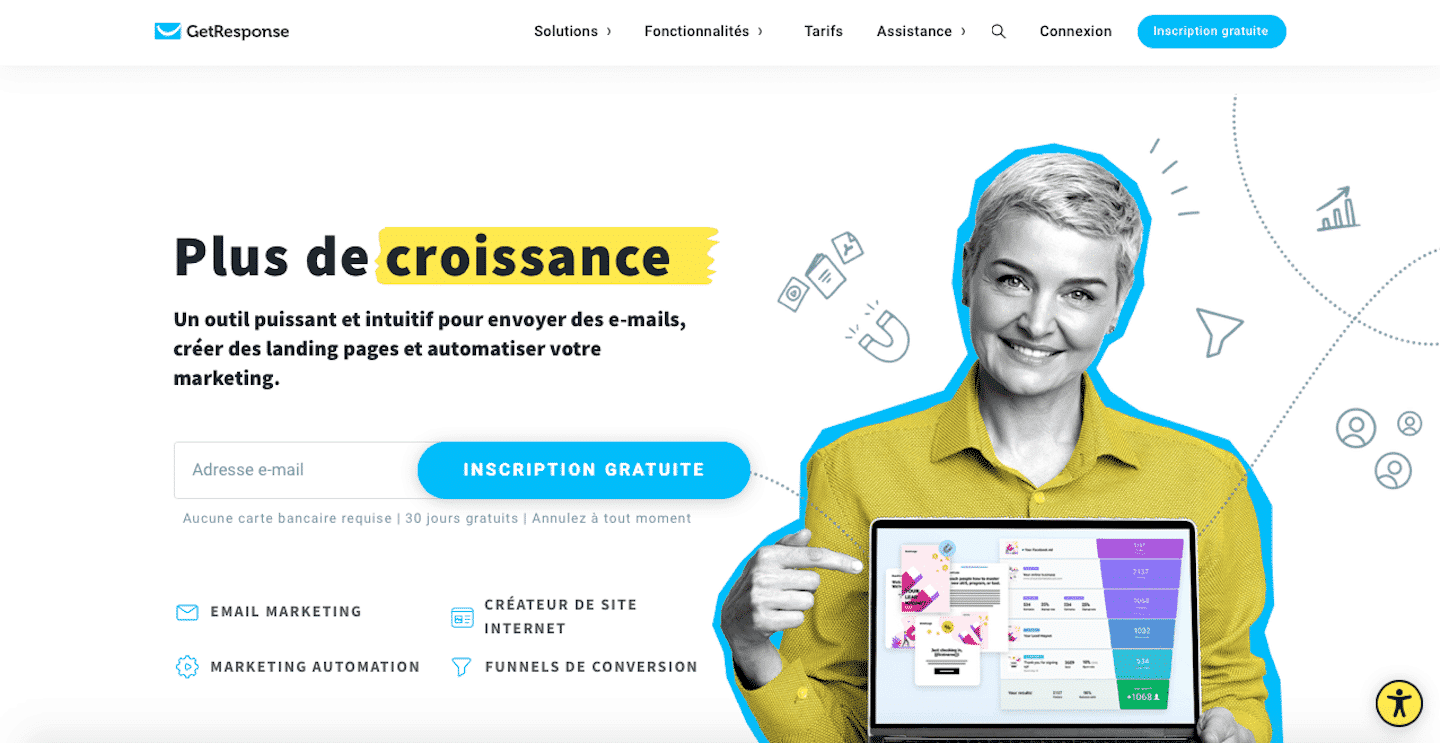
GetResponse lets you create impeccably designed newsletters. The tool features numerous templates and designs, perfectly crafted for optimum results. The interface itself is pleasant to use, and the tool’s various functions are well interconnected.
However, GetResponse offers very few integrations, and those that do exist are fairly shallow (Prestashop, Shopify, WooCommerce). The reporting tool is also a little light on detail. Last but not least, customer service has a bad reputation, especially for slow responses or the total absence of them.
There is a choice of prices:
- Basic: from 9.10 euros/month
- Plus: from 31.50 euros/month
- Professional: from 62.30 euros/month
- Max : on request
#10 Benchmark Email
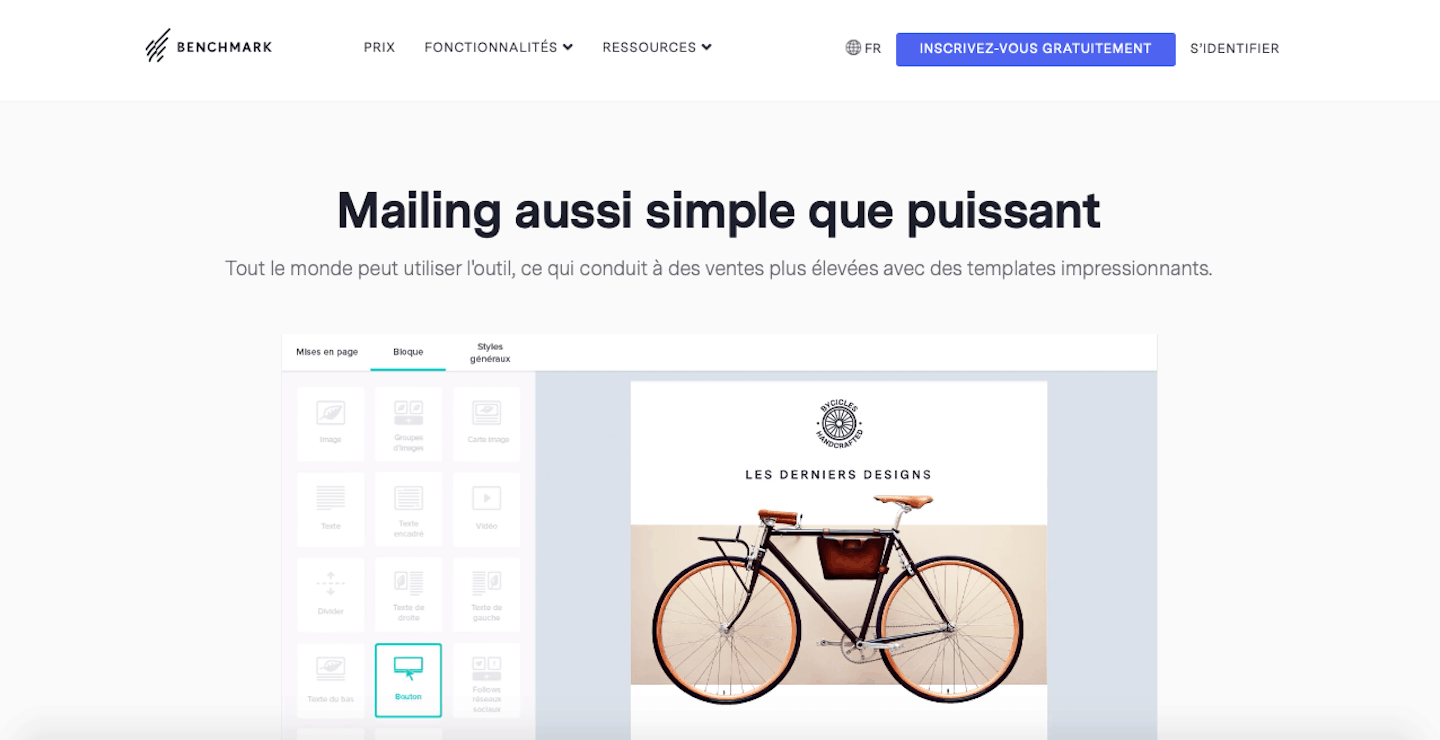
Benchmark Email is ideal for professionals who are used to creating mailing campaigns, and who want an easy-to-use solution at a good price. The interface is relevant and allows you to create great email campaigns at very competitive rates.
On the other hand, there is some doubt as to the actual deliverability of emails, and their rendering, which is sometimes less than optimal. Support has been singled out for its lack of cooperation, but digging deeper reveals hidden costs that can drive up the bill.
For a base of 500 contacts, Benchmark Email proposes three offers:
- Free: 0 euro per month, for 250 emails
- Classic: at 11 euros per month, for an unlimited number of e-mails
- A quotation for all functions
#11 Mailchimp

Recognized on the market, Mailchimp is praised by marketers who have been using it for many years. This software also appeals to novices who want a functional, easy-to-use tool. This is one of Mailchimp’s strengths.
The design and UX have been carefully thought out, making it a pleasure to use. Reporting is straightforward, and a wide range of templates are available for creating attractive newsletters. For these reasons, the tool quickly established itself as one of the market leaders.
Despite this status, the proposed rates seem a little disproportionate. Likewise, while the design aspect has been worked on, the newsletter campaign creation interface is a little peculiar and takes time to master. Finally, Mailchimp’s comprehensive approach (email, website etc…) can quickly become confusing and can help you get lost. We generally recommend alternatives to Mailchimp.
Mailchimp offers several marketing solutions:
- Free: 0 euro
- Essentiels: starts at 9.99 euros for 500 contacts
- Standard: starts at 14.99 euros for 500 contacts
- Premium: starts at 299.99 euros for 10,000 contacts
#12 SendX
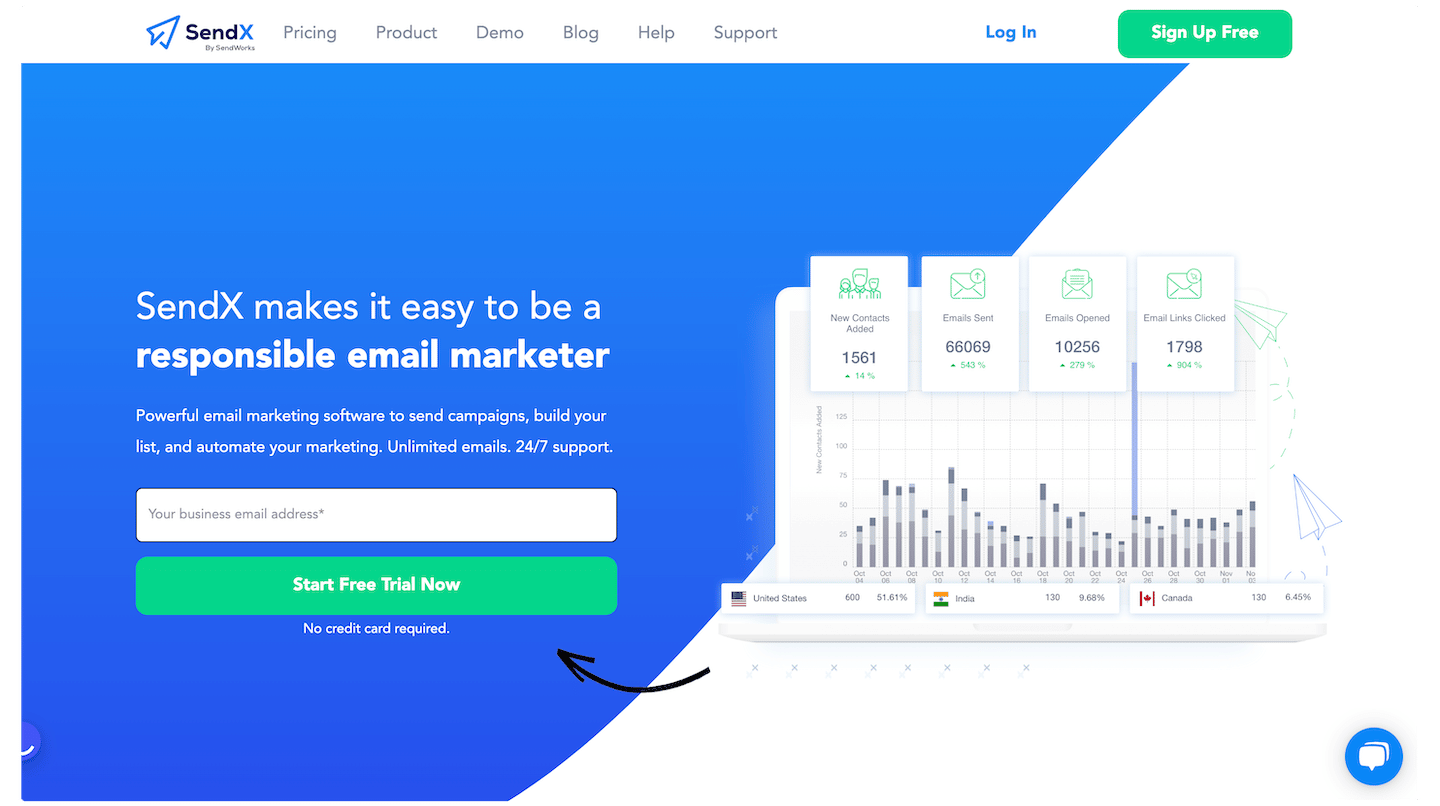
SendX is a newsletter creation tool for small and medium-sized businesses. The great thing about SendX is that it’s very affordable, gives access to all the features you need, and support is available 24/7, every day of the year by email or chat.
The WYSIWYG editor lets you customize the colors and structure of your emails, and offers many conversion-optimized templates. It’s very easy to use and solid.
When it comes to reporting, SendX gives you access to all the usual statistics, plus a “Heatmap” to see precisely where clicks are concentrated in your emails.
We regret the absence of advanced marketing automation workflows, and the solution is not yet available in French.
- SendX offers a unique plan starting at $9.99 / month for 1000 contacts with unlimited features and emails.





